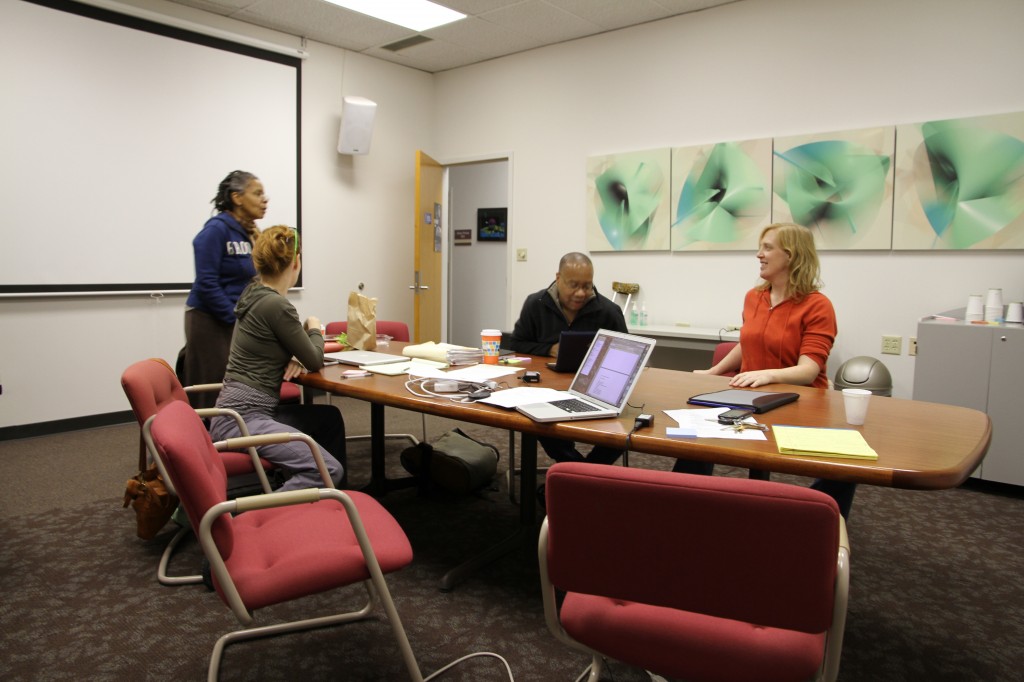Allowing for the Unknown
Posted on March 28th, 2012
Beginnings are messy.
We deliberately start by not knowing in order to allow our research to emerge from the materials at hand. Beginnings are messy because we entertain all input, listen and watch, listen and watch and take in, and listen and watch, and gather multiple perspectives. Nothing is outside the boundaries in the beginning. Beginnings are messy. We deliberately start by not knowing in order to move into new spaces and encounter the unfamiliar.
We are starting with Bebe Miller and two dancers with whom she has worked for many years Angie Hauser and Darrell Jones. Bebe’s work is emergent, jazzy in its timing, grounded and works in and against the inevitable flow. What is it about her work that makes it feel so humane? Do you feel this if you’ve never danced or is it those mirror neurons of mine that can watch something and feel how it would be to do it? In our collaboration on Synchronous Objects, William Forsythe often drove the process with questions that instigated actions. What if? What else? What else might this dance look like? What are the innumerable manifestations, old and new, of choreographic thinking? What’s the next level of imaginary trace? How might we create alternative sites for the organization of action to reside? If I apply these questions to our new process with Bebe Miller then what I need to know deeply is how she organizes action. What does she see and how does she invite this from her dancers specifically? How do we share this with non-dancers and is it interesting?
I’m reading a book right now. It is one of those books by one of those science journalists summarizing recent neuroscience and applying it to our daily lives. I used to say I wasn’t interested in those things: cognition, neuroscience, and philosophies of perception. But now I find myself listening to programs, watching documentaries and reading numerous books like this. This morning I read that the study of human perception was slowed down by the idea that we could take it apart like a clock, look at all the parts and understand how it works. But human perception is more like a cloud. And clouds are hard to research. Unlike a clock, they cannot be taken apart piece-by-piece to understand how they work. Clouds exist in relationship to other things, in dynamic flows, and they are constantly being remade. With this project we are very much in the cloud space of research. It is a very different kind of research and sometimes uncomfortable and we don’t have the answers. That’s how we know we’re going the right way, toward the unknown, the curious, and the difficult to articulate.
– norah
Tagged: choreographer, dancer, duets, emergent, LMA, perception, visualization, William Forsythe
